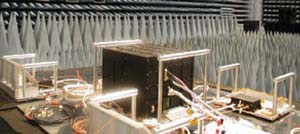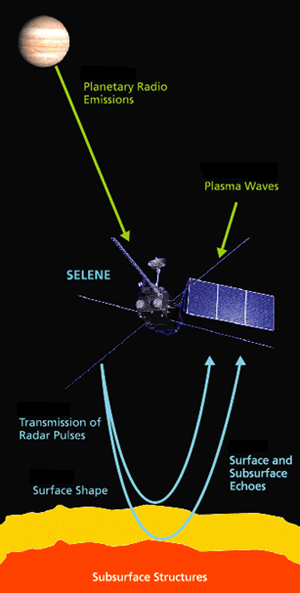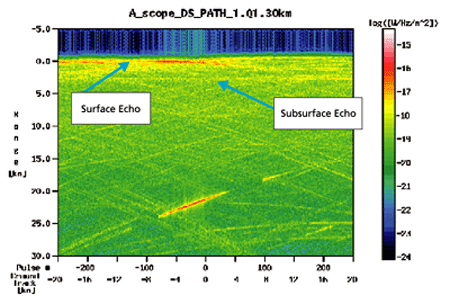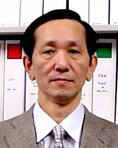LRS is designed for sounding the surface and subsurface structures of the Moon by using HF radar technique with the frequency of 5 MHz. The low frequency radar method makes it possible to realize the mapping of the subsurface structure within a depth of several km with a range resolution of less than 100 m for a region with a horizontal scale of several tens of km. LRS will contribute to the study of the thermal history of the lunar surface region relating to a time scale of several hundreds of millions of years.
Planetary radio waves and plasma waves around the moon's orbit will be observed without any interference from man-made noise from the earth and solar radiation.
| Specifications | |
|---|---|
| Mass | 23.182kg |
| Power | 56.7W |
| Sounder obs. | |
| SDR frequency | 5MHz (main freq.) |
| Radiation Power | 800W |
| Pulse width | 200 micro sec |
| Modulation | 10kHz/micro sec |
| Sounding depth | 5km |
| Natural plasma wave obs. | |
| Frequency | 10Hz - 30MHz |
| Telemetry speed | |
| High speed | 492kbps |
| Low speed | 176kbps |
LRS Component test @ Radiowave test facility (Tsukuba Space Center)


The LRS system transmits RF pulses with frequency of 5 MHz which is able to penetrate deep into the Moon's subsurface region. When the radio waves meet with the discontinuity of subsurface material, it makes a subsurface echo signal. Observation of subsurface signal makes it possible to see subsurface structure of the Moon.

Example of the LRS observation over a synthesized moon's surface and subsurface structure is demonstrated in the below panel. The stratification and tectonic feature observed by the LRS system are important keys to understand evolution of the Moon.


Takayuki Ono
Planetary Plasma Physics Laboratory,
Department of Geophysics,
Graduate School of Science, Tohoku Univ.